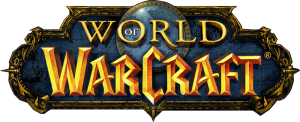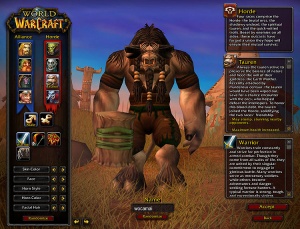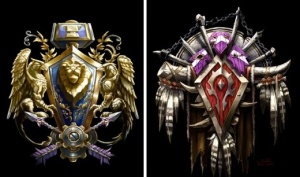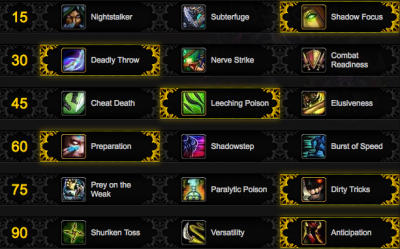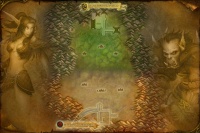Difference between revisions of "World of Warcraft"
(→See Also) |
|||
| Line 7: | Line 7: | ||
There are four expansions that impacted the gameplay and storyline in significant ways. The first, [http://us.blizzard.com/en-us/games/burningcrusade/ The Burning Crusade], was released on January 16, 2007. [http://us.blizzard.com/en-us/games/wrath/ Wrath of the Lich King], the second expansion, was released on November 13, 2010. The third expansion, [http://us.blizzard.com/en-us/games/cataclysm/ Cataclysm], was released on December 7, 2010. In October 2011 at Blizzcon, a fourth expansion, [http://us.battle.net/wow/en/game/mists-of-pandaria/ Mists of Pandaria], was announced along with some of the content to be expected in the expansion <ref> [http://us.battle.net/wow/en/game/mists-of-pandaria/ World of Warcraft's Mists of Pandaria Homepage]</ref>. The game was officially released on September 25, 2012. | There are four expansions that impacted the gameplay and storyline in significant ways. The first, [http://us.blizzard.com/en-us/games/burningcrusade/ The Burning Crusade], was released on January 16, 2007. [http://us.blizzard.com/en-us/games/wrath/ Wrath of the Lich King], the second expansion, was released on November 13, 2010. The third expansion, [http://us.blizzard.com/en-us/games/cataclysm/ Cataclysm], was released on December 7, 2010. In October 2011 at Blizzcon, a fourth expansion, [http://us.battle.net/wow/en/game/mists-of-pandaria/ Mists of Pandaria], was announced along with some of the content to be expected in the expansion <ref> [http://us.battle.net/wow/en/game/mists-of-pandaria/ World of Warcraft's Mists of Pandaria Homepage]</ref>. The game was officially released on September 25, 2012. | ||
| − | World of Warcraft is the most popular MMORPG to date, with approximately 11 million subscribers as of June, 2011. | + | World of Warcraft is the most popular MMORPG to date, with approximately 11 million subscribers as of June, 2011. Ethical considerations for WoW include concerns over game addiction and anonymity online. |
== Gameplay == | == Gameplay == | ||
Revision as of 21:31, 11 December 2012
World of Warcraft, commonly known as WoW, is a massively multiplayer online role-playing game (MMORPG) produced by Blizzard Entertainment, based in Irvine, California. It is the fourth game set in the Warcraft Universe that was originally conceived in 1994 with Blizzard’s release of Warcraft: Orcs & Humans. The game takes place in a virtual fantasy world called Azeroth and an extradimensional realm called Outland. The game’s storyline is set four years after the conclusion of Blizzard’s previous Warcraft series release, Warcraft III: The Frozen Throne. World of Warcraft was announced on September 2, 2001 and was released on November 23, 2004.
There are four expansions that impacted the gameplay and storyline in significant ways. The first, The Burning Crusade, was released on January 16, 2007. Wrath of the Lich King, the second expansion, was released on November 13, 2010. The third expansion, Cataclysm, was released on December 7, 2010. In October 2011 at Blizzcon, a fourth expansion, Mists of Pandaria, was announced along with some of the content to be expected in the expansion [1]. The game was officially released on September 25, 2012.
World of Warcraft is the most popular MMORPG to date, with approximately 11 million subscribers as of June, 2011. Ethical considerations for WoW include concerns over game addiction and anonymity online.
Gameplay
Choosing a realm
Before a character avatar is created, the player must first select a realm to play on. Players can create multiple characters, but are restricted to just 10 characters per realm with a maximum of 50 characters overall. Available realm types are player versus player (PvP), player versus environment (PvE), player versus environment with roleplaying (PvE-RP), or player versus player with roleplaying (PvP-RP). Player versus player realms are geared towards players who enjoy engaging other players of the opposite faction in combat throughout the entire world, whereas player versus environment realms emphasizes more game content and less on fighting other enemy players (PvP combat is still allowed in special zones such as battlegrounds, arenas, and designated PvP zones). See World PvP for more details.
Creating a character
In World of Warcraft, players create and control a character avatar within the virtual world Azeroth. The virtual world offers the player many gameplay options, most of which involve exploring the virtual landscape, fighting monstrous creatures, following quest lines, and interacting with other players and non-player characters (NPCs).
Similar to many other MMORPG games, World of Warcraft requires a subscription to play, which can be paid using pre-paid game time cards, or setting up a recurring subscription through a credit/debit card.
Players must choose between two opposing factions upon creating a character, Alliance or Horde. Characters from opposing factions are not allowed to communicate with each through normal chat channels. Only members of the same faction can speak, send mail, and adventure together within the game. A more recent patch introduced the Blizzard's "Real ID" system, which is an externally independent chat application that ties in to all of Blizzards' newer games. In doing so, it allows for players to communicate to each other regardless of the game they're playing.
After selecting a faction, the player must then choose a race and class. The player’s faction choices dictates access to different race types. Different races have different racial abilities, which can be beneficial in different situations. Similarly, different classes have different abilities, and are restricted to certain gear types. The Alliance faction has more traditional race types like Humans and Night Elves, while the Horde faction has more sinister race types like Orcs and Undead. All class types are accessible to both factions, but some class types are only accessible to specific race types. The upcoming Mists of Pandaria expansion will introduce the Pandarian race, which will be the first race option that can be either Alliance or Horde [2].
| Alliance Races | Horde Races |
|---|---|
| Human | Orc |
| Dwarf | Undead |
| Night Elf | Tauren |
| Gnome | Troll |
| Draenei | Blood Elf |
| Worgen | Goblin |
| Pandaren | Pandaren |
| Classes | Armor Type | Possible Role(s) |
|---|---|---|
| Death Knight* | Plate | DPS (melee), Tank |
| Druid | Leather | DPS (melee or ranged), Healer, Tank |
| Hunter | DPS (ranged) | |
| Mage | Cloth | DPS (ranged) |
| Monk** | Leather | DPS (melee) |
| Paladin | Plate | DPS (melee), Healer, Tank |
| Priest | Cloth | DPS (ranged), Healer |
| Rogue | Leather | DPS (melee) |
| Shaman | DPS (melee or ranged), Healer | |
| Warlock | Cloth | DPS (ranged) |
| Warrior | Plate | DPS (melee), Tank |
**Only available with the Wrath of the Lich King expansion
***Only available with the Mists of Pandaria expansion
Basic in-game play
As characters increase in level, they gain various new abilities and talent points that expand upon the gameplay for each class type. Each character class has 3 specializations that correlate to three different playstyles, as well as 6 talent points which players can spend to improve their base abilities. Each talent point is spent by choosing one of three possible talents that appear on a six-tiered table.Much of the gameplay in World of Warcraft is based around completing quests offered by NPCs that advance the main story line and the numerous subplots. Quests are structured around killing monsters, gathering resources, finding hidden objects, interacting with NPCs, discovering new locations and delivering items. Players are given rewards for completing quests that include new items, in-game money, and experience.
After characters progress beyond their basic starting zones, they are offered options to group with four other players and enter dungeons. Grouping with other players brings a new dynamic to the gameplay. Players must use their specific class abilities to aid other members in the group in defeating more resilient monsters and bosses.
The three main class types that form a group are healers, tanks and damage dealers (more commonly referred to as "DPS"). Healers heal the group members, tanks protect the group by directing monster’s attention on themselves, and damage dealers use their abilities to damage and kill the monsters. Damage dealers can either be ranged (such as mages, warlocks and hunters), or melee (such as warriors, death knights, and rogues)
Professions
Characters can choose to learn two main professions [3] which allow players to gather or create items. Each main profession has it's own benefits to the player in the form of buffs or gear modifications allowed only to characters with that profession. Characters can also learn fishing, cooking, archaeology and first aid as secondary professions. Players can abandon and learn new professions freely at any time.
| Primary Professions |
|---|
| Alchemy |
| Blacksmithing |
| Enchanting |
| Engineering |
| Herbalism* |
| Inscription |
| Jewelcrafting |
| Leatherworking |
| Mining* |
| Skinning* |
| Tailoring |
*Gathering profession
Types of gameplay
Gameplay in which the player is working towards an objective of defeating an in-game NPC, such as a dungeon boss, is considered player versus environment (PvE) gameplay. The other form of gameplay found in World of Warcraft is categorized as player versus player (PvP) gameplay, where a player works towards an objective of defeating another player, or team of players. Examples of this type of gameplay are arenas and battlegrounds.
Player versus environment gameplay
As characters reach the maximum level 90, they gain access to “end game” content, which usually consists of heroic 5-player dungeons, and raids that progress the main story line in World of Warcraft. Raids are similar to grouping for dungeons during lower levels.
There are two group sizes in the current raid environment, 10-player groups and 25-player groups. Raids are considerably more difficult than five player dungeons, and the difficulty can vary between 10-player content and 25-player content. After players have killed the final boss of a raid, they may choose to change the raid difficulty to heroic, making the boss encounters of that raid even more difficult (either by increased damage dealt by the boss or an enhanced mechanic). Players may choose to do only certain boss encounters of a raid dungeon on heroic difficulty, while completing the other boss encounters on regular difficulty.
Raids from the original World of Warcraft release allowed either a 20-player or 40-player raid group to participate in the encounter. With the Burning Crusade expansion, raids changed to just either 10-player or 25-player encounters. The Wrath of the Lich King expansion introduced raids that had both a 10-player setting and a 25-player setting, but the raid bosses dropped different equipment depending on which setting players were in. The Cataclysm and Mists of Pandaria expansion raids have both a 10-player and 25-player setting, but the equipment dropped in each setting is now the same.
Player versus player gameplay
World of Warcraft offers several forms of player versus player gameplay such as dueling, battlegrounds, arenas, and world PvP. A statistic is tracked for each player called "Honorable Kills," which is incremented every time a player kills a player in PvP combat close to his own level. Players are further rewarded with "Honor Points" which can be used as a form of currency for armor upgrades.
Dueling
Dueling is an unstructured fight between two players; these players can be of the same faction or of different factions. Additionally, the players need not be of the same level; a level 1 character can request a duel with a character that is level 85. A player can click on another player's character and "request duel," upon which the other player will be prompted to accept or decline. A duel is won when one of the players' hit points reach 1 or one of the players leaves the "duel area", which is defined as a specific region around where the duel was requested. Winning a duel does not grant an Honorable Kill. Dueling is often used to settle disputes initiated from trash-talking, although Blizzard has implemented a complicated system that allows balance between all classes on a large scale; thus, there are some classes that will always have a large advantage over other classes when constricted to a 1v1 setting.
Many of the starting zones for each race (such as Goldshire for humans) typically emerge as regions where dueling takes place frequently. Characters of the maximum level (currently 85) congregate in these areas to show off their characters for new players.
Battlegrounds
Battle grounds are, in essence, "PVP instances" where players have some goal to achieve while killing members of the opposite faction. Battlegrounds can involve resource gathering through capturing and defending bases, capture the flag, "king of the hill", and killing the opposite factions commander. Battlegrounds groups can range from ten to forty combatants per faction, and map sizes are made to reflect the number of combatants. Players can earn experience in battle grounds if they are not maximum level, and honor points that can be spent on PVP gear.
Arenas
Arenas are ranked, competitive, and structured matches between teams of two, three, or five players. They are incentive-driven in the form of items and rankings, along with titles that a player can display to other players. A team at any given time is represented by a team-chosen name, a logo, a roster, and a ranking. Arena "seasons" are typically about six months long. Only teams composed of players of the maximum level (85 currently) are able to achieve rankings and earn Arena Points.
An arena team is created by first purchasing a charter and obtaining enough signatures to constitute a team of a specified size bracket. Once the charter is turned in, players can then queue for a match, at which point they will be sent to a random arena map where the battle will take place. Each team is then given a short time to prepare. Afterwards, the gates to the map are finally opened, and the match continues until all of the players of a team are dead, or the time limit of 45 minutes has been reached.
Contrary to the limits of world PvP, arena matches can be between teams of the same faction. Each realm is located in a Battlegroup, and each Battlegroup is composed of several realms. Arena matches can only be played between teams located in the same Battlegroup.
At the end of each season, titles are awarded to the highest-rated teams in each bracket (2v2, 3v3, and 5v5). [4]
Arenas are occasionally the source of ethical issues, such as griefing and harassment.
World PvP
World PvP describes player versus player cross-faction combat which is unstructured by the game, as opposed to the structured battlegrounds or arenas; however, world PvP is often organized into large groups by guilds or even simply groups of players who wish to work towards a common goal. World PvP leads to some ethical issues as well, such as player killing.
In PvE realms, a player becomes flagged by either typing the command "/pvp" or by attacking an NPC or flagged player of the opposing faction. A flagged player is attackable by all players of the opposing faction, whether they are flagged or not. The duration of being flagged for PvP combat is five minutes if initiated by an attack, or indefinitely if it was manually activated with "/pvp." In PvP realms, all players are considered "flagged" as soon as they enter the opposing faction's territory or contested territory; they may not unflag themselves while in these areas. [5]
Common targets of world PvP include each race's leader, such as Lady Sylvanas Windrunner, the leader of the Undead[6]. World of Warcraft offers an achievement and mount as a reward for slaying all the leaders of the opposing faction; thus, attempts are made frequently. These targets are housed in the hearts of their respective cities, so even before killing the high-level leader, penetration of the city must first be achieved. This generally involves fighting through large amounts of constantly-respawning guards as well as defeating any players of the opposing faction that wish to defend their race's leader. Therefore, attempts to earn this achievement are usually done in large groups of high-level players.
Additionally, the low-level starting areas for each race are often targets for players of the opposing faction to attack the low-level quest giving NPCs, thus preventing the new, low-level players from completing the quests initiated by those NPCs.
See also Choosing a realm.
Pet Battles
Implemented in Mists of Pandaria, Pet Battling is a new style of play that involves collecting small companions and leveling them via battling other small animals that one can find in the wild. This feature also allows players to have pet battles with each other.
The basis of Pet Battles is that a player can organize a team of up to three small pets. Each pet has various strengths and weaknesses that give them advantages or disadvantages against other certain types of pets. For example, the Bat comapnion has the pet type of Flying, which makes it an effective opponent to Aquatic-type pets, but an ineffective choice against Dragonkin-type pets.
Through battling wild, players also have the option to capture new pets, adding them to their collection either to level up for battling or to use as an aesthetic companion to passively follow their characters. [7]
Notable Events
In-game Funeral
Ethical issues
- See also: Ethics in Computer & Video Games
Numerous ethical issues arise in World of Warcraft because of its massively multiplayer environment. In-game examples are player killing, division of loot items, twinking, power leveling, hacking, etc. The debate in World of Warcraft’s virtual world is the moral status of such activities, and their implications on people’s real world lives. Other ethical issues include time spent playing the game, abandonment of one’s real life obligations, loss of real-world social relationships, trading real money for in-game items, attachment to player avatars, etc.
Griefing
Griefing in the form of player killing is a major issue in many games which involve player versus player combat, for which World of Warcraft is no exception. In many of the low-level starting areas, high-level players of the opposing faction often congregate and kill NPCs that provide quests and experience for the low-level players. Oftentimes, these low-level, inexperienced players will click on the opposing faction's player, inadvertently attacking them, and thus flagging themselves for player versus player combat. Then, the high-level player of the opposing faction will "camp" their corpse, killing them over and over again, as the low-level new player has virtually no chance of defending themselves. Additionally, even if the low-level player does not unintentionally flag themselves, their gameplay experience will still be harmed, as they cannot complete the quests that they want, since the NPCs that they need to interact with are being slain over and over again, until the opposing faction players either leave or are driven away by high-level players of the region's faction.
Since each character has a unique name on its realm, it is extremely easy to track down a player as long as one knows the name of their character. Because of this, griefing in the form of verbal harassment often takes place, even cross-realm. Since arenas and battlegrounds are grouped by Battlegroup and not realm, an angry player on a different realm can create a character on the realm of the player that they want to harass and message them, simply by knowing the name of the character. In the competitive atmosphere of arenas, players often become frustrated and will harass the players of the opposing team out of anger; this phenomenon detracts from the quality of the gameplay of the harassed. Although this activity may satisfy the harassing player, griefing and harassment are immoral since they are making the experience less enjoyable for the players being harassed.
Gold Farming
A major ethical issue faced in World of Warcraft is the issue of 'gold farming'. Traditionally, the issue of gold farming started in China, where gamers undertake terrible living conditions to perform repetitive tasks in order to gain virtual currency. After, players sell the accumulated in-game currency for real-world currencies.
Power Leveling
Another prevailing ethical issue similar to gold farming is the issue of power leveling services. Against the code of conduct on World of Warcraft, many gamers will offer to level up one's character for a small fee. This, often times, involve either the seller to manually level up, use bots and scripts to level up characters, or sell bots and scripts to the user to level up their characters with. Players can also use these services to pay others to level their character's professions or to earn honor points on their character through PvP.
Offline Implications
World of Warcraft is a socially driven game, with players interacting with other players and thus, humans interacting with other humans. Unlike a game like chess, where players generally don’t brood over a loss for weeks after detaching from the game, World of Warcraft is a game which is played every day for long periods by most players.
Users who play World of Warcraft can become seriously influenced by in-game actions in real life, and often establish a strong connection between themselves and their in-game avatars. In this context, World of Warcraft’s affects on peoples' real lives and MMORPG social environments are the subject of much ethical study. One ethical concern that may arise in World of Warcraft is the practice of ethical research within the virtual environment. For example, epidemiologists[8] looked at an in-game incident, termed the "Corrupted Blood"[1] incident, as an opportunity to study the spread of infectious diseases within a population.
See Also
- Blizzard Entertainment
- Diablo II
- Diablo III
- Electronic Sports
- Game Addiction
- Starcraft II
- Warcraft III
- MMORPGs
References
- ↑ World of Warcraft's Mists of Pandaria Homepage
- ↑ Meet the Pandaren
- ↑ World of Warcraft Professions
- ↑ Arena PvP System - WoWWiki Retrieved 2011-12-17
- ↑ PvP Realm - WoWWiki Retrieved 2011-12-17
- ↑ Lady Sylvanas Windrunner Retrieved 2011-12-17
- ↑ Guide to Wow Pet Battles
- ↑ Balicer RD. Modeling infectious diseases dissemination through online role playing games. Epidemiology. 2007;18(2): 260–261.
